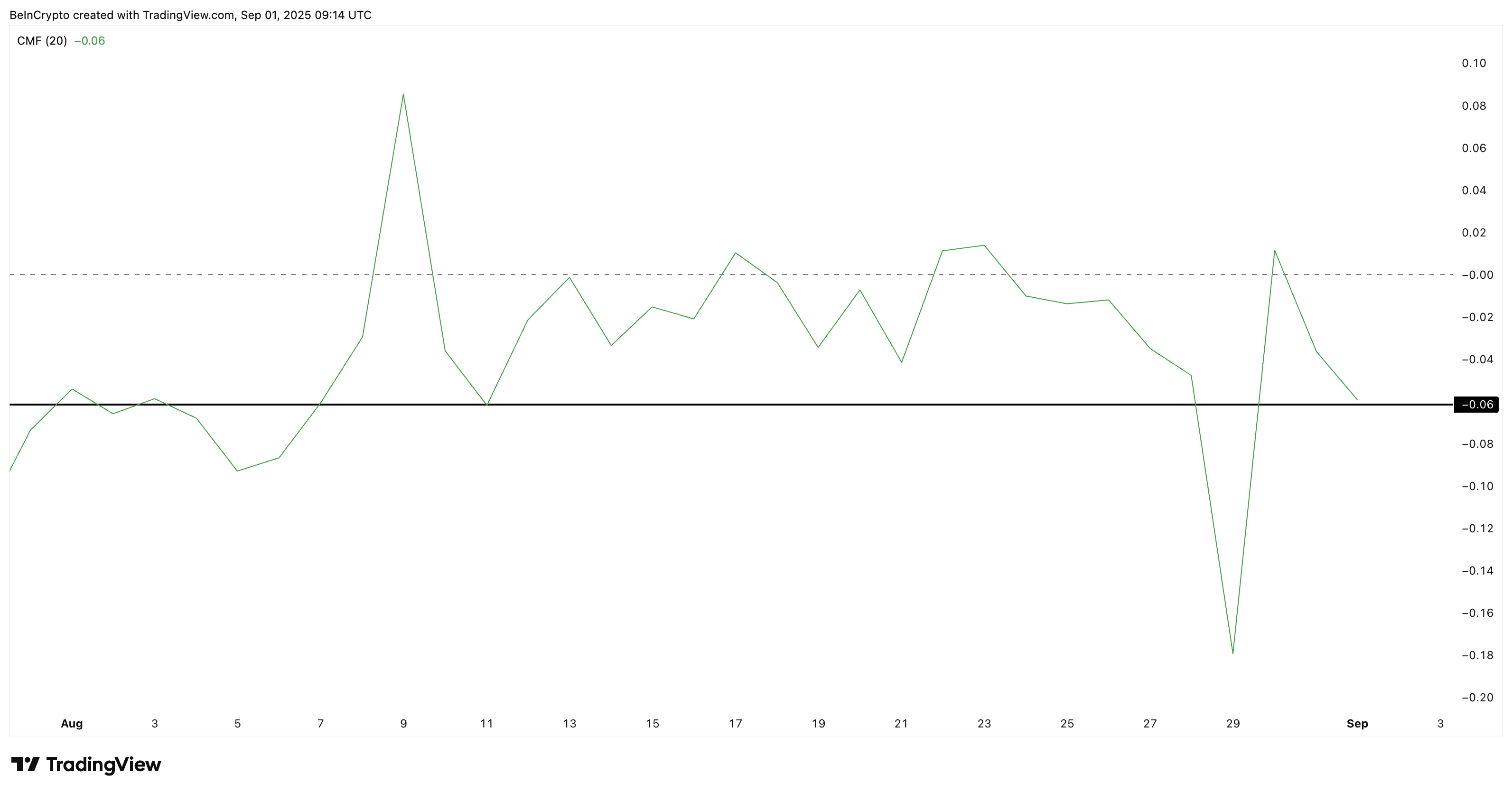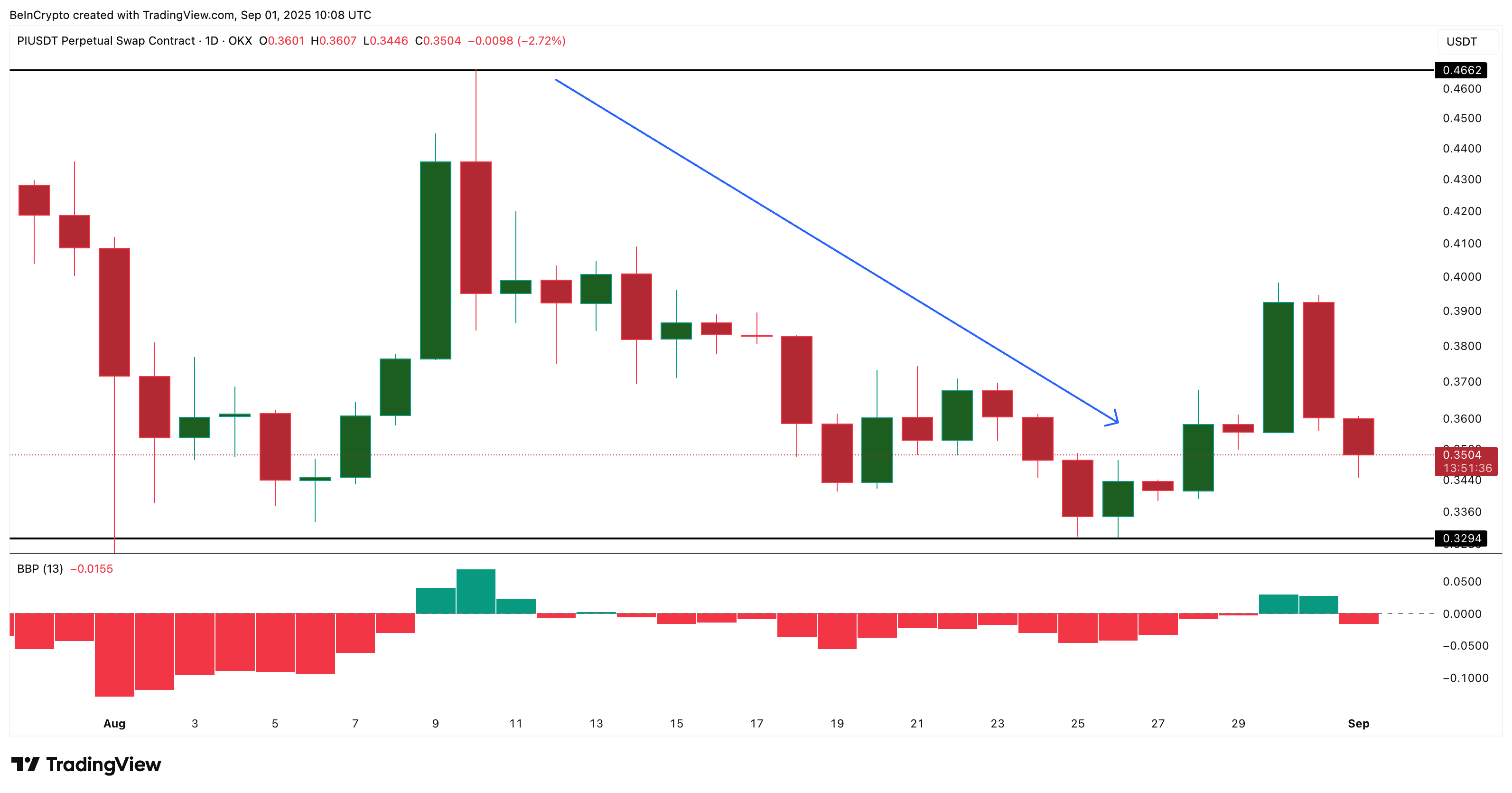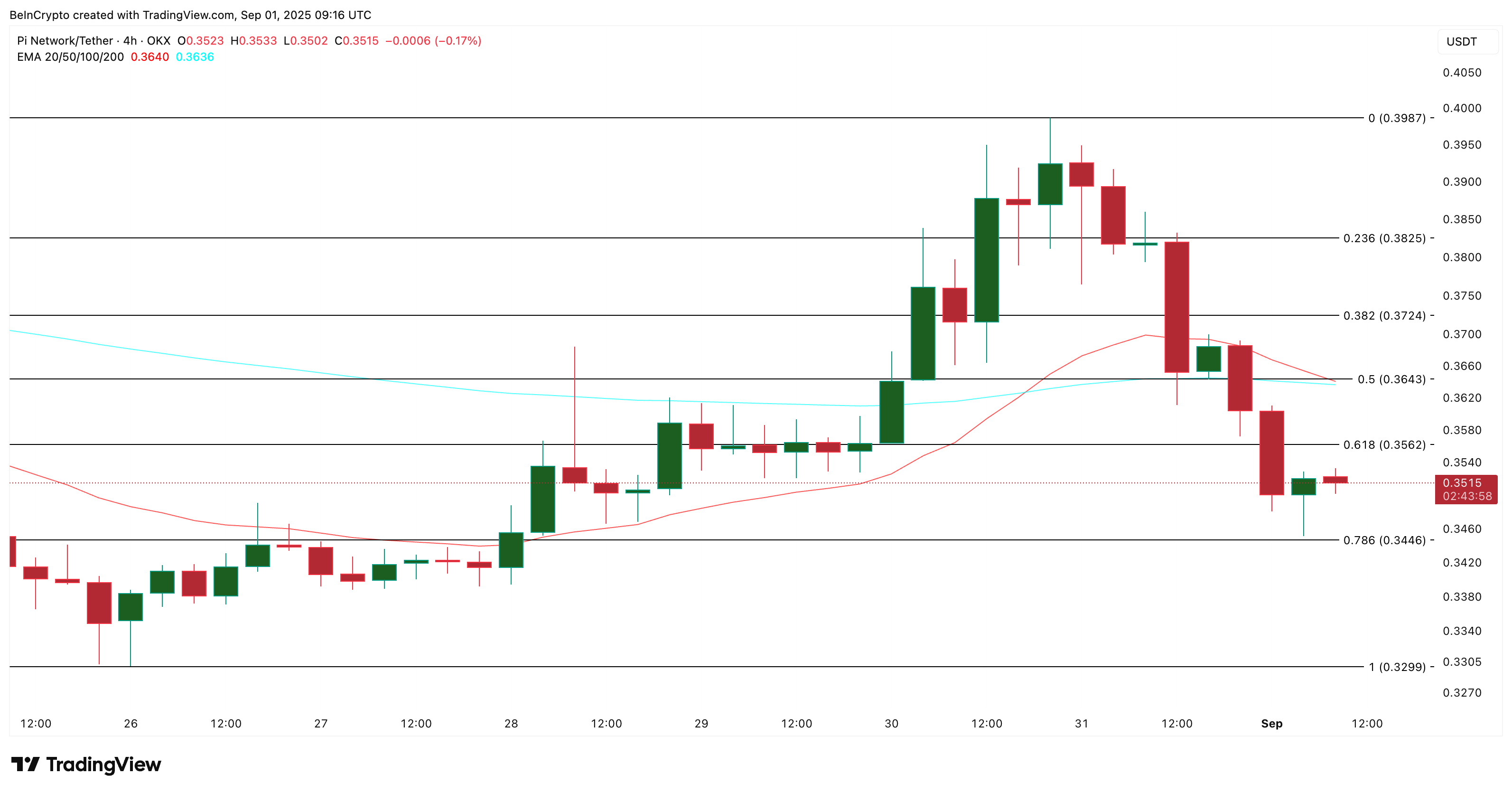Pi Coin Price Eyes New Lows as Bearish Death Cross Nears
Pi Coin price has slipped back near $0.35, erasing most recent gains. Weak inflows and a looming bearish crossover suggest more downside ahead.
Pi Coin (PI) price has slipped back into negative territory after a short-lived rally. At press time, it traded a little above $0.35, down almost 8% in the past 24 hours.
The sharp drop has erased most of its recent gains, leaving only 2.3% growth over the last seven days. But even those modest gains could vanish soon, as the token stares at fresh lows.
Money Flows Dry Up, Bears Step In
The Chaikin Money Flow (CMF) measures whether money is entering or leaving an asset. It briefly spiked above zero when Pi Coin rallied from $0.32 to $0.39, showing buyers had stepped in.
But now it has dropped to -0.06, close to the August 11 low, signaling that capital inflows have dried up and sellers are taking control again.
 Pi Coin Inflows Slowing Down:
Pi Coin Inflows Slowing Down:
The Bull Bear Power (BBP) adds to this bearish picture. BBP compares buying pressure to selling pressure. When it turns negative, it shows bears have the upper hand.
The last time BBP flipped negative, right after the August 9–11 highs, the Pi Coin price tumbled from $0.46 to $0.32, a fall of over 30%. The same flip has happened again, warning of another potential drop.
 Pi Coin Bears In Control:
Pi Coin Bears In Control:
Pi Coin’s brief rally has already lost steam. With money outflows rising and bearish pressure dominating, the token looks exposed to further downside. Unless the $0.34 support holds, the Pi Coin price could revisit $0.32 — and perhaps sink even lower.
For now, bulls are struggling, and bears appear ready to take full control.
For token TA and market updates: Want more token insights like this? Sign up for Editor Harsh Notariya’s Daily Crypto Newsletter.
Crossover Looms as Key Pi Coin Price Support Gets Tested
To capture smaller price movements, the focus shifts from the daily chart to the 4-hour chart.
Here, the short-term 20-day Exponential Moving Average (EMA) or the red line is on the verge of crossing under the longer-term 100-day EMA (sky blue line). An EMA gives more weight to recent prices, making it quicker to respond to changes than a simple moving average.
 Pi Coin Price Analysis:
Pi Coin Price Analysis:
When a shorter EMA falls below a longer EMA, it is called a bearish “Death” crossover. This often signals that selling momentum is strengthening and that the asset could be at risk of setting new local lows.
Pi Coin trades near $0.35, just above the critical support of $0.34. If that level breaks, the PI price could slide to $0.32, its late August low. Any deeper fall might expose new lows under $0.32.
On the other side, bulls need a strong daily close above $0.36 to regain momentum. But with both CMF and BBP stacked against them, the odds remain with the bears.
Pi Coin’s brief rally has already lost steam. With money outflows rising and bearish pressure dominating, the token looks exposed to further downside. However, if Pi Coin, in some way or the other, manages to cleanly reclaim $0.36 and then $0.38, we can expect the short-term price breakdown risk to get delayed.
Disclaimer: The content of this article solely reflects the author's opinion and does not represent the platform in any capacity. This article is not intended to serve as a reference for making investment decisions.
You may also like
After bitcoin returns to $90,000, is Christmas or a Christmas crash coming next?
This Thanksgiving, we are grateful for bitcoin returning to $90,000.

Bitcoin security reaches a historic high, but miner revenue drops to a historic low. Where will mining companies find new sources of income?
The current paradox of the Bitcoin network is particularly striking: while the protocol layer has never been more secure due to high hash power, the underlying mining industry is facing pressure from capital liquidation and consolidation.

What are the privacy messaging apps Session and SimpleX donated by Vitalik?
Why did Vitalik take action? From content encryption to metadata privacy.

The covert war escalates: Hyperliquid faces a "kamikaze" attack, but the real battle may have just begun
The attacker incurred a loss of 3 million in a "suicidal" attack, but may have achieved breakeven through external hedging. This appears more like a low-cost "stress test" targeting the protocol's defensive capabilities.

